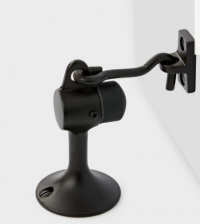jl3
REGISTERED
Hi All,
We have a door going into a locker room of an outdoor pool that will always be kept propped open during business hours and closed/locked only when the pool is closed. The owner wants a 4'-0" door here and our hallway is about 4'-2", I'm not sure we can do this with ADA but wasn't clear if the maneuvering clearances still apply if the door will always be open. There is a description of the maneuvering clearance only needing to be the width of the opening provided there is no latch or closer; we won't have a closer but there would be a latch - could we simply provide a lock/trim where the latch can be retracted?
We have a door going into a locker room of an outdoor pool that will always be kept propped open during business hours and closed/locked only when the pool is closed. The owner wants a 4'-0" door here and our hallway is about 4'-2", I'm not sure we can do this with ADA but wasn't clear if the maneuvering clearances still apply if the door will always be open. There is a description of the maneuvering clearance only needing to be the width of the opening provided there is no latch or closer; we won't have a closer but there would be a latch - could we simply provide a lock/trim where the latch can be retracted?


